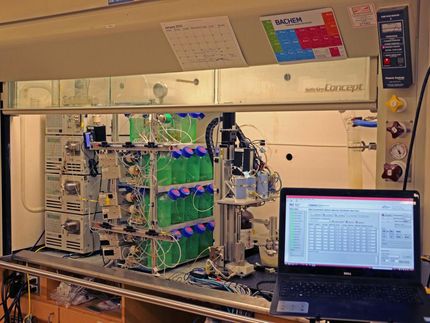Novel peptide enhances natural mechanism to protect brain cells following cardiac arrest
Advertisement
A novel peptide appears to enhance a natural mechanism for protecting stressed brain cells and improve cognitive function following cardiac arrest, scientists report.
Cognitive loss is one of the most feared consequences of cardiac arrest survival, Dr. Darrell W. Brann, vice chairman of the Department of Neuroscience and Regenerative Medicine at the Medical College of Georgia at Augusta University said. And, certain areas of the brain, such as the hippocampus, a center of learning and memory, are particularly vulnerable in the minutes, hours, even days following cardiac arrest, a leading cause of death and disability in the United States.
So the scientists have developed a sort of bait-and-switch peptide that, at least in animal studies, prompts greater use of an innate brain cell protector, said Brann, co-corresponding author of a study in the Journal of Neuroscience.
The peptide is DEETGE-CAL-Tat and its bottom line is to make more of the transcription factor Nrf2 available to ailing neurons. Typically, Nrf2 remains inactive in the cell cytoplasm, bound to a protein called Keap1, until some major stress, such as ischemia occurs. At that time, some Nrf2 is released to move to the cell nucleus, where it turns on a host of antioxidant and otherwise cell-protective and detoxification genes. Brain cell damage and death can occur over hours and days, and oxidative stress alone can makes cells dysfunctional, Brann notes. The scientists have evidence that their Nrf2-freeing peptide has benefit up to two days after the insult. Next steps could include clinical trials of the peptide.
In their rat model of global cerebral ischemia, administering DEETGE-CAL-Tat peptide reduced interaction between Nrf2 and Keap1 in the hippocampus. That meant more Nrf2 traveled to the desired destination in the brain cell nucleus. Rats experienced reduced oxidative stress, which contributes to cell damage and death; increased activation of genes that protect brain cells; and marked preservation of cognitive function, the scientists write.
The peptide was effective whether it was injected directly into the brain following injury or administered under the skin afterward, a scenario that more closely mimics how it might be used clinically, said Dr. Ruimin Wang, MCG research scientist and co-corresponding author.
An amino acid sequence in Nrf2 called DEETGE is what actually attracts Keap1. MCG scientists took advantage of this natural attraction by putting DEETGE in their peptide as some friendly competition. To ensure that the peptide only works in response to injury, they packaged DEETGE with calpain, an enzyme that can cut proteins and is activated by the calcium released after injury. To help ensure the peptide reached its definition, they added Tat, a protein that enables viruses, such as HIV, to be so skillful at invading a cell.
Calpain has the additional important job of cutting Tat loose, once the peptide is inside the cell, because the transportation aid has now become a liability that can actually interfere with the peptide's ultimate job of binding to Keap1. The injury-specificity of their peptide afforded by calpain also reduces unintended consequences.
"You want it to be cleaved in an injury situation," said Brann, noting that their injury-specific peptide had no effect on healthy rats. Typically, Keap1 holds Nrf2 in an inactive state inside the cytoplasm. That natural bond sets Nrf2 up for degradation, likely preventing excessive buildup in healthy times. "Not only does it keep Nrf2 from the nucleus, it degrades it," Brann said. "But in the case of injury, we need more Nrf2 to go to the nucleus."
Although just how this naturally occurs is not certain, in the minutes and hours following injury, scientists have shown that Nrf2 levels start to increase inside the cell nucleus. Some Nrf2 likely is released following modifications to Keap1 that occur with ischemia, Wang said.
Wang notes that there are both high- and low-affinity bonds between Keap1 and Nrf2 and that the low-affinity interactions are easier to separate following stress and injury. The scientists say their peptide may make more Nrf2 available for cell recovery by interfering with the harder-to-separate, high-affinity bonds.

















































